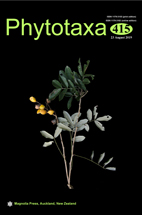Abstract
First described from the Mascarenes (Rodrigues Island, Indian Ocean), Olifantiella gorandiana Riaux-Gobin was later observed from several other oceanic basins. We here examine the morphology of this taxon from a scraping of a juvenile green turtle Chelonia mydas Linnaeus, named ‘G5-Manahere’, from Moorea Island (Society Archipelago, South Pacific). In this sample, a great range of morphologies, not previously described for the species, were encountered, demonstrating a high degree of polymorphism with regard to valve shape and also stria pattern. These morphological differences appear to be associated with size, as smaller cells become more rounded. The fine structure (e.g., stria density and pattern) may also be associated with changes in shape. These specimens may all belong to the same and unique taxon: Olifantiella gorandiana. This high degree of polymorphism is described, and put into the context of the constraining epizoic conditions. This study permits furthers the description of the fine structure of O. gorandiana, using focused ion beam (FIB) and scanning electron microscopy (SEM) techniques.

